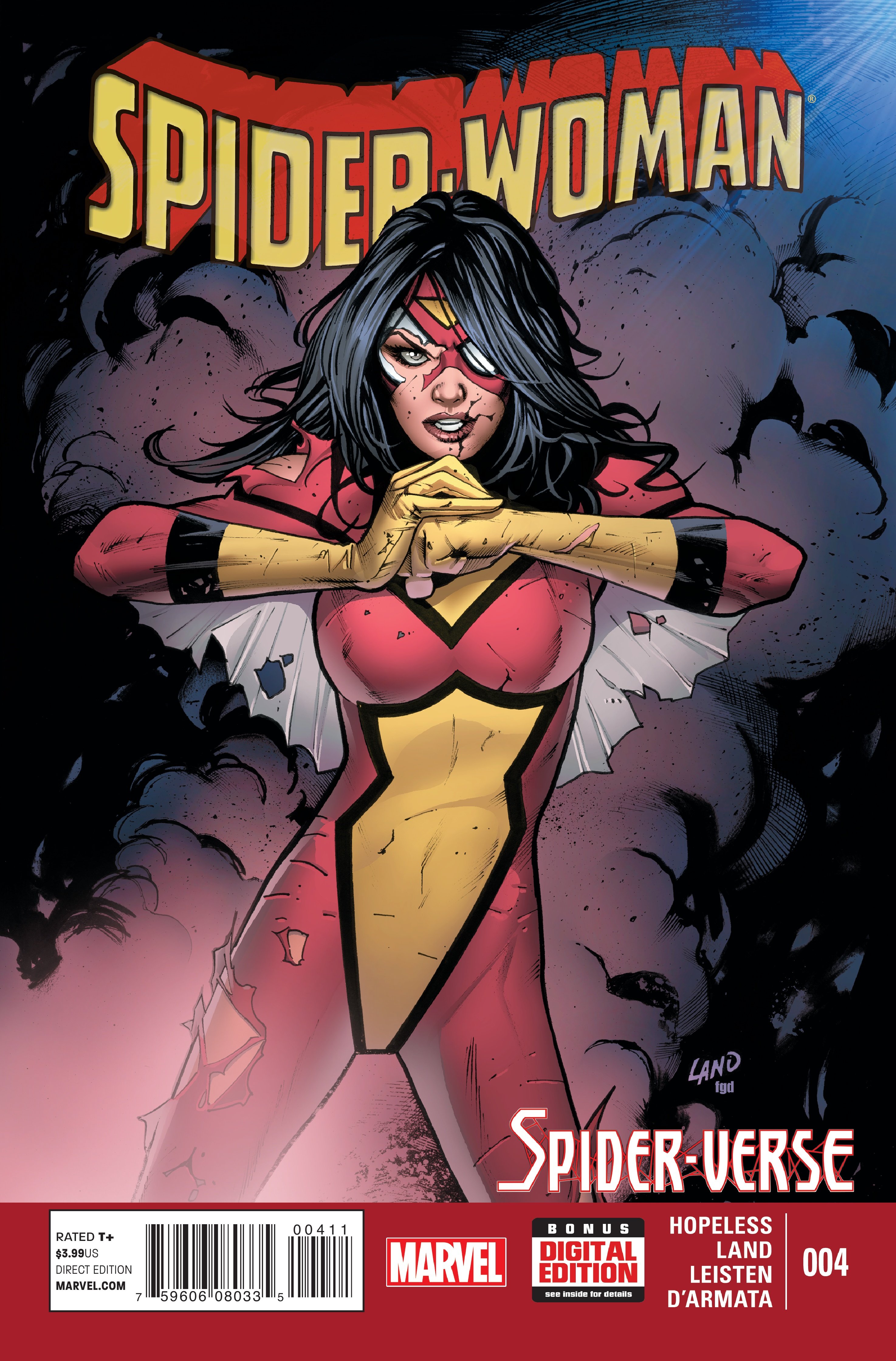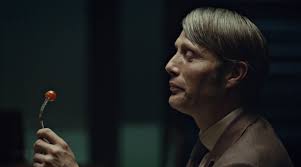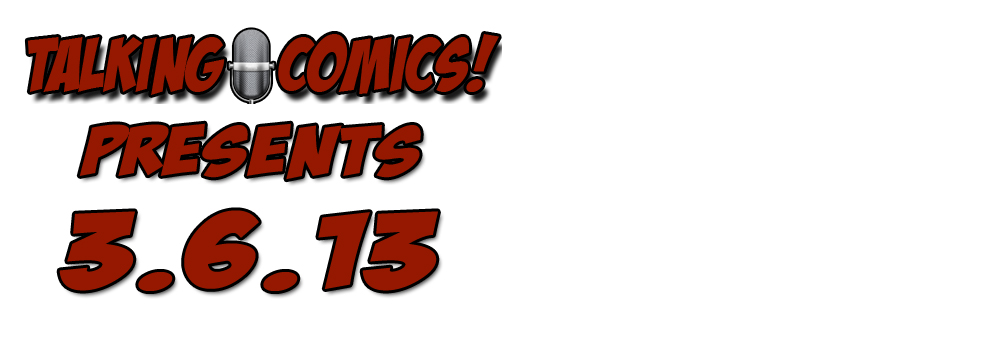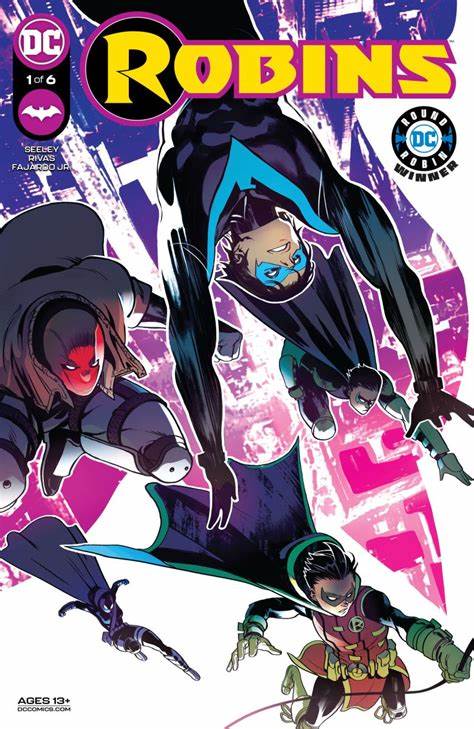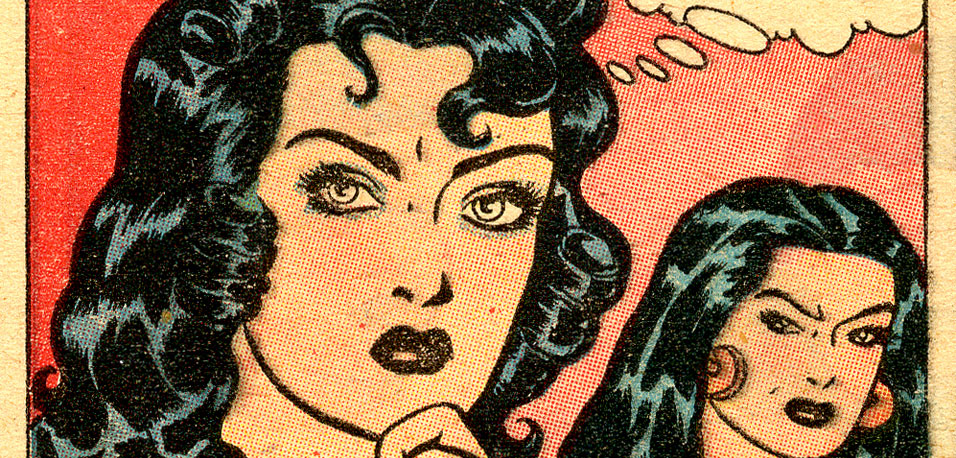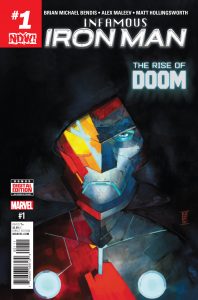
Infamous Iron Man #1
Writer: Brian Michael Bendis
Artist: Alex Maleev
Color Artist: Matt Hollingsworth
Letterer & Production: VC’s Clayton Cowles
Review By: Nate Mondschein (@33andmoonshine)
–Mild Spoiler Warning for Infamous Iron Man #1, Medium Spoiler Warning for anyone who hasn’t been reading Invincible Iron Man, and Spicey Spoiler Warning for those of you who have yet to discover the super secret alias of Victor von Doom–
Look, let’s be entirely honest with ourselves: nobody cares about Parker Robbins anymore.
I’m not saying this to be divisive. I’m saying this because The Hood used to be a much more interesting character than he’s been in years, and you know it, and I know it, and if it were up to me, the only time he’d make an appearance these days would be whenever somebody feels like listing characters that very few people have managed to write as well as Brian K. Vaughn (here’s looking at you, Runaways).
Thankfully, Brian Michael Bendis is not me. What he is is a master of repurposing the underused and underserved of the Universe-Formerly-Known-As-616, mining their personality defects and quirky histories for effective narrative tools, and offering direction (or at the very least, some utilitarian purpose) to even the most rudderless of characters.
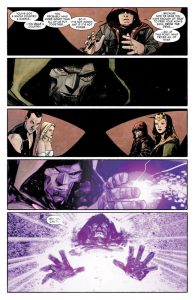
This skill is on full display as we begin Infamous Iron Man #1, the new and highly anticipated Doctor Doom-centric Marvel Now series, with a jump cut back to the glory days of Norman Osborn’s Cabal. There, we find our protagonist (not a medical) Doctor deliberating over group norms with villainous compatriots Namor, The White Queen, Loki, and Mr. Robbins. As we join them, Everyone’s Second-Favorite Villain With A Red “Hood” AKA Clearly The Weakest Link In The Cabal Chain, Goodbye decides it’s the right time to turn his long-past endearing “cocky younger brother at the big kids table” gimmick up to eleven and press von Doom with some two-bit psychoanalysis, and in doing so unintentionally offers us a glimpse into the driving inquiry of Bendis’ newest story: “If it’s not money, and it’s not power…because now we hear you have enough of that to free your mom’s soul from the Devil…so, at this point, what drives all of this?”
For his query, Little Red Riding Hood earns himself a casual one-way banishment to India; but it’s a worthwhile question nonetheless. As Doom has never been shy to tell us, his gifts and glories are nigh innumerable, and his successes (once you’ve factored in the sliding scale of Mandatory Comic Book Villain Losses) an in many ways the greatest amongst his peers. Now in the aftermath of his most grandiose, if not egocentrically misguided accomplishment (because credit where credit is due, homie saved the 616 from all kinds of Beyonder bullshit), he has been returned the one thing which he previously had no power to reclaim: his unscarred face.
So now what?
Bendis and Maleev set out to answer that question in Infamous Iron Man #1, the first of two new “post” Civil War II titles focusing on the void left in the wake of whatever it is that will happen to Tony Stark when the event wraps up three years from now (is my safe bet). And if this first issue (and every one of their past efforts together) is any indication, Infamous Iron Man intends to offer us a gritty, humanistic take on a character who has been defined since his inception by superiority. Though Doom’s recent steps away from this dictatorial arrogance and towards a more grounded redemption have been documented throughout this past year’s Invincible Iron Man, it appears that this newest Iron title will offer us a more focused look into the motivations behind his pursuit, while simultaneously calling the entire journey into question: Can a once-vengeful god truly become a hero of the people? Can a man earnestly fight against his very name? Can Victor von Doom pull off post-15th Century formal wear?
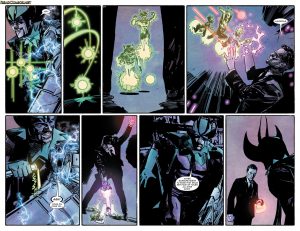
Doom’s response to all three questions begin with a rescue mission to retrieve S.H.I.E.L.D director and Robin Sherbotsky doppleganger, Mariah Hill, from the clutches of a despondently self-reflective Diablo. In classic hero fashion, Victor arrives just in the nick of time, sporting a slim-cut suit in place of his traditionally more medieval attire and baring an unsettling resemblance to Oceans Twelve baddie Vincent Cassel, and calmly engages questionable-mustache-rocking villain.
Action in Infamous Iron Man #1 is mostly limited to the following few pages, but they prove to be more than sufficient. Maleev’s characteristically rough linework leans heavily towards the visceral impact of imagery rather than precise rendition, delivering a battle that is frenzied and difficult to follow in all the right ways: luminescent glow cuts across the shaded hideaway in a rush of furious magic; sparks dance past the blurring edges of Diablo’s summoned goblins. Throughout, Matt Hollingsworth’s muted colors keep even the most spectacular of moments in check, reminding us that this is a story about stepping away from godhood, and all of the polish and shine that comes with it.
The sequence offers us one of the more seamless merging of science and technology that we’ve seen from the good doctor, one hand a fury of spell-casting, the other adorned with a pulsar gauntlet that is the hallmark of Stark’s armor. But when the moment comes to a head, it is Victor’s magic that sends Diablo careening towards his destiny as a smoldering pile of ash. It’s a beautifully rendered series of panels, one that ultimately carries more significance that is apparent at first glance.
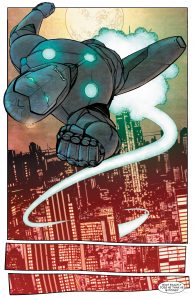
In a story of transition and repentance, it is necessary to note the progress as well as the stagnation: For all the havoc wrought by his technology, it is sorcery that has given life to Doom’s darkest demons (breeze through Waid and Werdirgo’s Unthinkable if you need any convincing), and his continued reliance upon the mystical half of his abilities is telling. While we has seen indication that there is, at the very least, earnest intention to Doom’s recent attempts at reform, Bendis is making it clear that we should expect a well fought war before his better angels can truly win the day.
The real draw throughout Infamous Iron Man #1 is Bendis’ characterization of the suddenly much-more-human Doom, as formal as ever, but unsure of how to present himself in a way that does not contradict his heroic objectives. This discomfort is brought to a head in the midst of a tense interaction with biophysics genius/Tony-Stark-Love-Interest Amara Perera, during which Victor stumbles though clumsy apology, redundant in its acknowledgement of the former’s insight as well as his own failings. There is a palpable disorientation throughout, with both characters appearing unsure of their footing as the present Victor wrestles with the sins of his past. Few writers have the command to give such authentic, tangible life to such an intangibly complex character, but Bendis threads a delicate needle, steering clear of heavy-handed proclamation in favor of halting dialogue and hints of inner conflict breeching the surface an otherwise measured conversation.
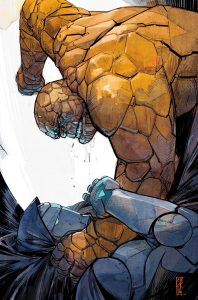
On the whole, Infamous Iron Man #1 proves to be a captivating start to an already conceptually thrilling series, though not one absent of first-issue stumbles: The reveal of Doom’s new armor leaves something to be desired (one of the few moments where it feels as though Maleev’s style falls somewhat short of the requisite grandiosity), as does the teams neglect of exploring the implications of Victor’s decision to once again envelope himself in metal. But there’s plenty of time for that to come. And with a gigantic Ben-Grimm-shaped conflict lurking just around the corner, it’s hard to think of a single reason not to jump on board.
VERDICT: If you’ve ever read a Bendis and Maleev title before, I shouldn’t need to tell you to BUY THIS. If you haven’t ever read a Bendis and Maleev title before, you should check out their run on Daredevil, and still BUY THIS.


